A Walk in the Woods
As this very welcome spring unfurls around us, one of the first places to really burst into life is our native woodlands. Many of us eagerly anticipate the carpeting of the woodland floor with the intense colour of the beautiful bluebell; a species which is very special to Britain as it is estimated that as much as 50% of the world’s population is on our island.
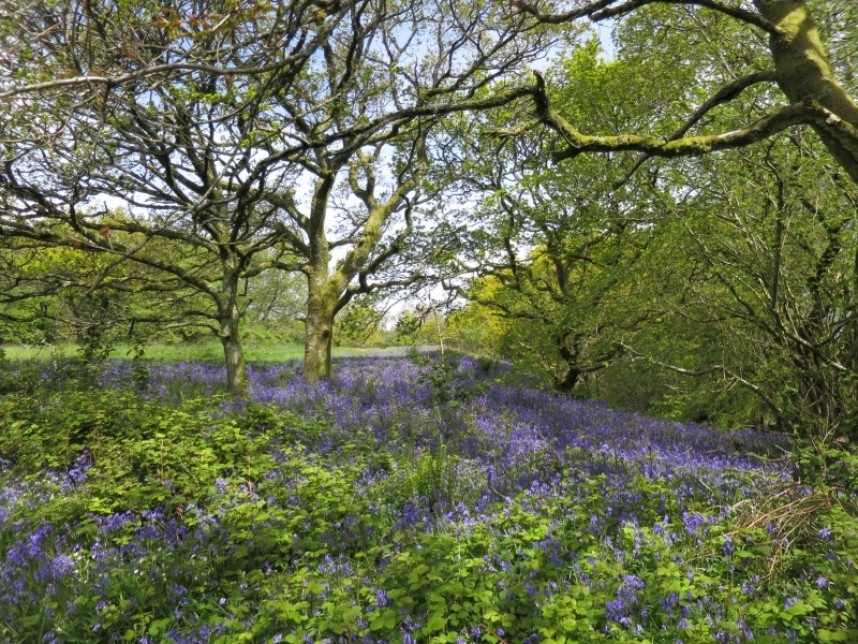
English Bluebells © Claire Bending
Native woodlands are often places of abundance; where they are untouched or only lightly touched by man’s hand, they contain a fantastic array of plant species. Shady lane verges too, often contain small fragments of ancient woodland flora.
If you are heading out on a woodland walk, or for a potter down the lanes, have a look out for the following species which, like the bluebells, are emerging now.
Greater stitchwort Stellaria holostea
This is a plant that I always associate with bluebells as the delicate white flowers are often found amongst them. When in flower it is quite easy to spot and identify with its slender and hairless stems, bright yellow anthers and forked petals (if you look closely you will see that the upper half of the petals are cut in two).
When it is not in flower though, it is a bit trickier until you know what you are looking for! I for one will never forget what Greater stitchwort looks like in its vegetative state, as I once spent hours pondering over this mystery plant I had found in a wood. Its leaves were so slender, they were grass-like….maybe it was a type of grass?!
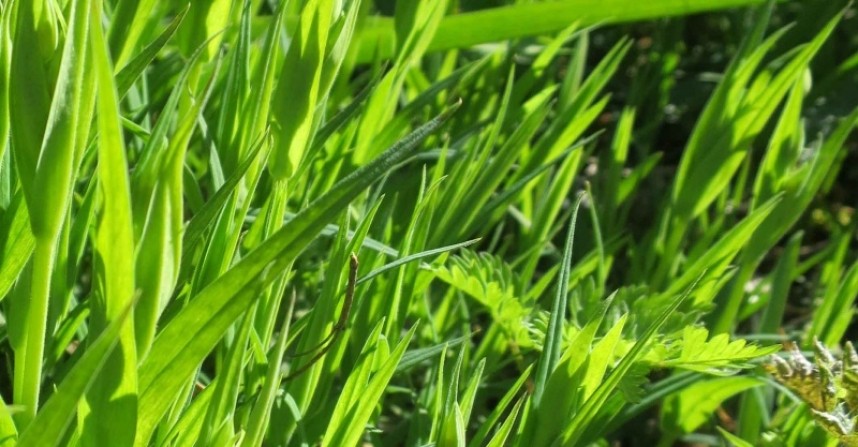
grass or broadleaved? © Claire Bending
So if you spot a plant in a woodland or shady verge with slender, pointed and hairless leaves that are in pairs on an upright hairless stem it is likely to be this.
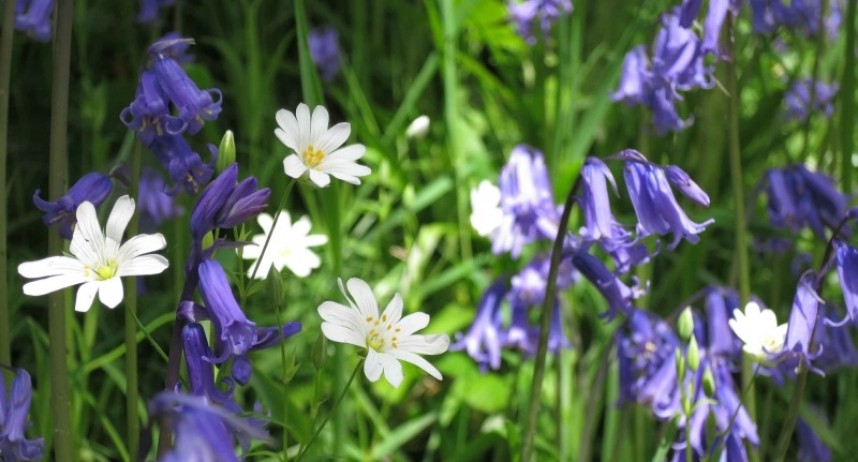
The delicate flowers of greater stitchwort with bluebell © Claire Bending
The name of the plant apparently comes from its ability to cure stitch, when chewed. I stop too often to look at plants though to get stitch, so I can’t vouch for it!
Garlic-mustard Alliaria petiolata
Often jostling with bluebells for attention in woodland is Wild garlic, or ransoms. With its large, shiny and pungent leaves and white pom-pom flower heads, it’s hard to miss.
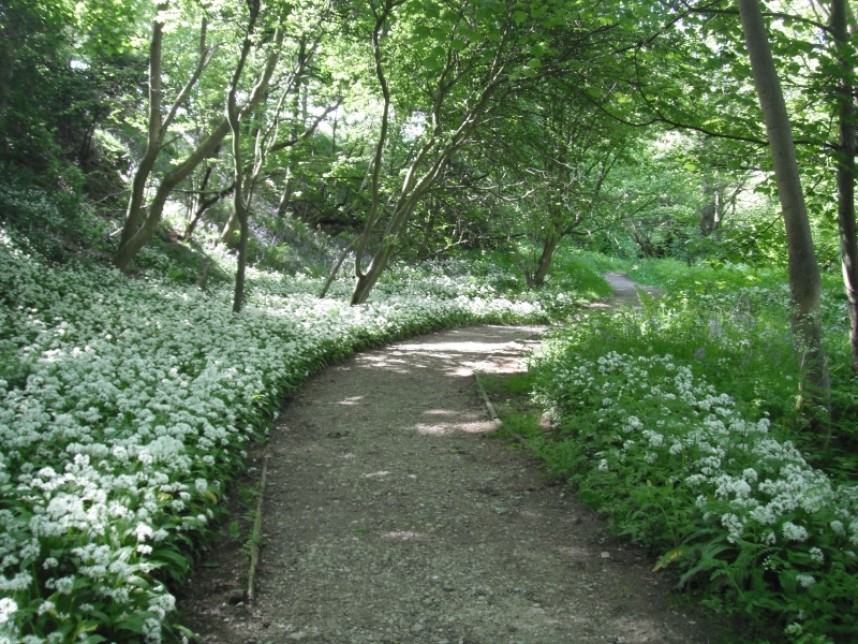
Wild garlic carpeting the woodland floor © Claire Bending
There is another garlicky plant lurking in the woods and lanes though, that is more subtle both in its appearance and smell: Garlic-mustard, sometimes also known as Jack-by-the-hedge.
It starts off as a small collection of heart-shaped leaves, but then these enlarge and it starts to shoot upwards, with heart-shaped leaves with wavy edges continuing to grow along the stem. When it is still small in early spring, it can be confused with Ground-ivy which has similar heart-shaped leaves, but the best way to check is by crushing a small amount of the plant. Ground-ivy has a sharp, rather unpleasant smell whereas Garlic-mustard, is, well- garlic mustardy!
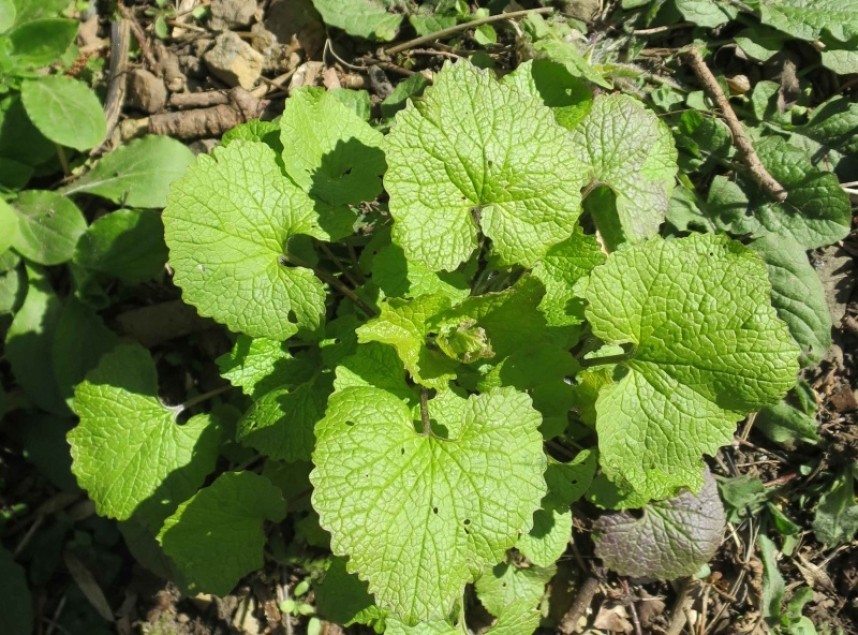
Garlic Mustard © Claire Bending
When the flowers appear, later in the spring, they are small, white and borne in little clusters. There are four petals to each flower, which are in a cross arrangement- a clue that they come from the crucifer family, which includes many of our cultivated edible species such as cabbage and broccoli.
Dog’s mercury Mercurialis perennis
This plant has been flowering since last month, but you can be forgiven for missing it! The tiny flowers are wind-pollinated, so there is no need for bright petals to attract insects.
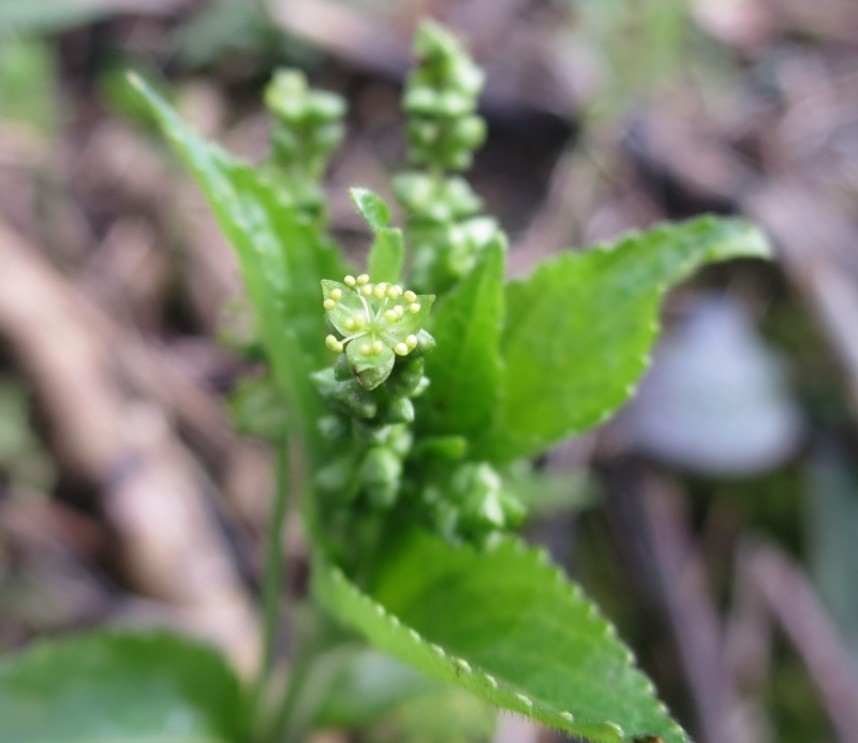
Dog's Mercury in flower © Claire Bending
The plants are diecious (separate male and female plants) so only the male plants will have the prominent yellow anthers seen in the photo. However, it mainly spreads via underground rhizomes so large areas of woodland can end up carpeted by Dog’s mercury. Consequently each area can end up as either male or female.
The unbranched stems bear pairs of oval, jagged-edged leaves that are bright green when they first emerge, but turn much darker as the year progresses. There are a number of possible confusion species, but this time of year the tiny, bobbly flowers are a good clue, as is that you will usually find the plant in quite large numbers.
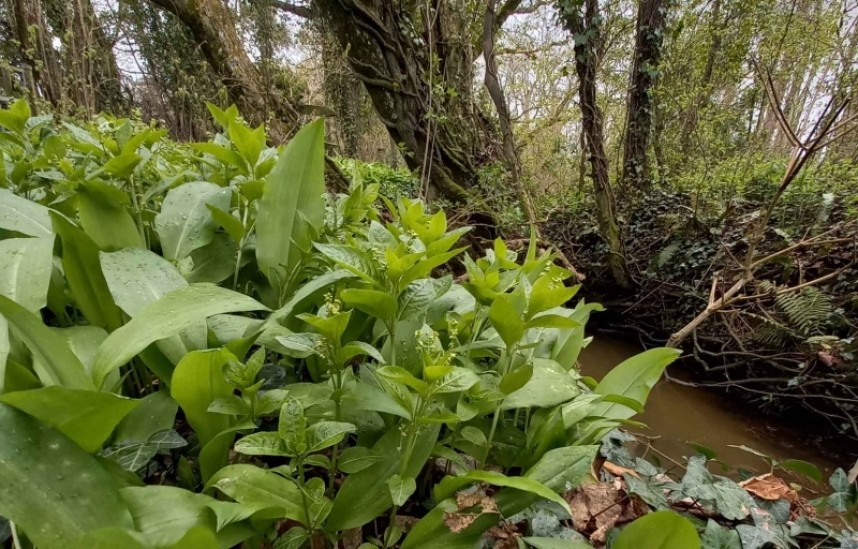
Dog's Mercury and Wild Garlic © Claire Bending
The plant’s name derives from being a species in the Mercury plant family (there is only one other member of the Mercury family in Britain- Annual mercury), and the “Dog’s” part of the name comes from Dog being an old word for something useless (bit harsh, I know!). It’s not completely useless in medicinal terms- it’s poisonous and has been used to bring on salivation and vomiting. Definitely not one to nibble on!
Claire Bending Instagram: @a_journey_with_plants Facebook: A Journey With Plants
Yorkshire Coast Nature – Wild Flower Walks Guide.
Join Claire on her upcoming walks to find out more Click Here



 Back to Blog
Back to Blog
